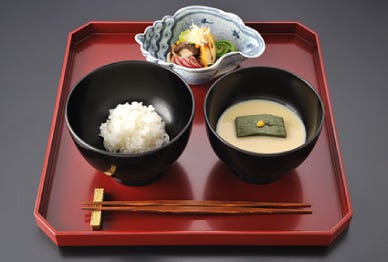Colin here. I wrote back in April about the relationships between sound and space:
When sound is dealt with effectively, you don’t notice it: you can focus on your conversation or on your own thoughts, a rare luxury in the world. But when a room is cacophonous, just about everything in the experience is diminished. And, due to the noise, more people talk loudly, which in turn raises noise levels even further—this is called the Lombard Effect.
But I was also thinking about texture. Sure, the space can have the right acoustic parameters, but also what is playing? Music creates an additional element to the design, vibe, and feeling of a public space. Problem is, very seldom do people get it right.
There’s an amazing story about noted Japanese composer Ryuchi Sakamoto. He is a regular at a WITI fav, Kajitsu, in New York and had a deep reverence for the sophistication of the food, a pristine vegetarian cuisine. According to Eater, “Kajitsu is the city's only option for shojin ryori, an ancient vegetarian Buddhist diet originally consumed by monks in Zen Buddhist temples.”
The only problem was Sakamoto hated the musical backdrop:
The issue was not so much that the music was loud, but that it was thoughtless. Mr. Sakamoto suggested that he could take over the job of choosing it, without pay, if only so he could feel more comfortable eating there. The chef agreed, and so Mr. Sakamoto started making playlists for the restaurant, none of which include any of his own music. Few people knew about this, because Mr. Sakamoto has no particular desire to publicize it.
Why is this interesting?
First, it says something that a noted musician, who could take his business elsewhere, respected the chef and establishment so much as to lend his ear to create a better ambiance, an ambiance that suited the craft and beauty of the food being served.
The result was amazing, according to Ben Ratliff at the NYT:
There was slow or spacious solo-piano music from various indistinct traditions; a few melodies that might have been film-soundtrack themes; a bit of improvisation. Where there was singing, it was generally not in English. I recognized a track from Wayne Shorter’s record “Native Dancer,” with Milton Nascimento, and a pianist who sounded like Mary Lou Williams, although I couldn’t be sure. This wasn’t particularly brand-establishing music, or the kind that makes you want to spend money; it represented a devoted customer’s deep knowledge, sensitivity and idiosyncrasies. I felt generally stumped and sensitively attended to. I felt ecstatic.
I disappeared into the playlist again and found a sense of calm on a chaotic day. And when you find yourself dining at the restaurant, the arrangements and selections of the music will make all the more sense when you consider the elegant craft behind the food. Check it out here.
When space, cuisine, sound, and texture come together, it creates something more meaningful than the sum of its parts. And can elevate an experience immensely. (CJN)
—
WITI x McKinsey:
An ongoing partnership where we highlight interesting McKinsey research, writing, and data.
How and where to work next. Selling, general, and administrative functions are integral to your organization’s success. What’s the best place for those people to work? Read here to see how the future of work will take shape.
—
Thanks for reading,
Noah (NRB) & Colin (CJN)
—
Why is this interesting? is a daily email from Noah Brier & Colin Nagy (and friends!) about interesting things. If you’ve enjoyed this edition, please consider forwarding it to a friend. If you’re reading it for the first time, consider subscribing (it’s free!).




